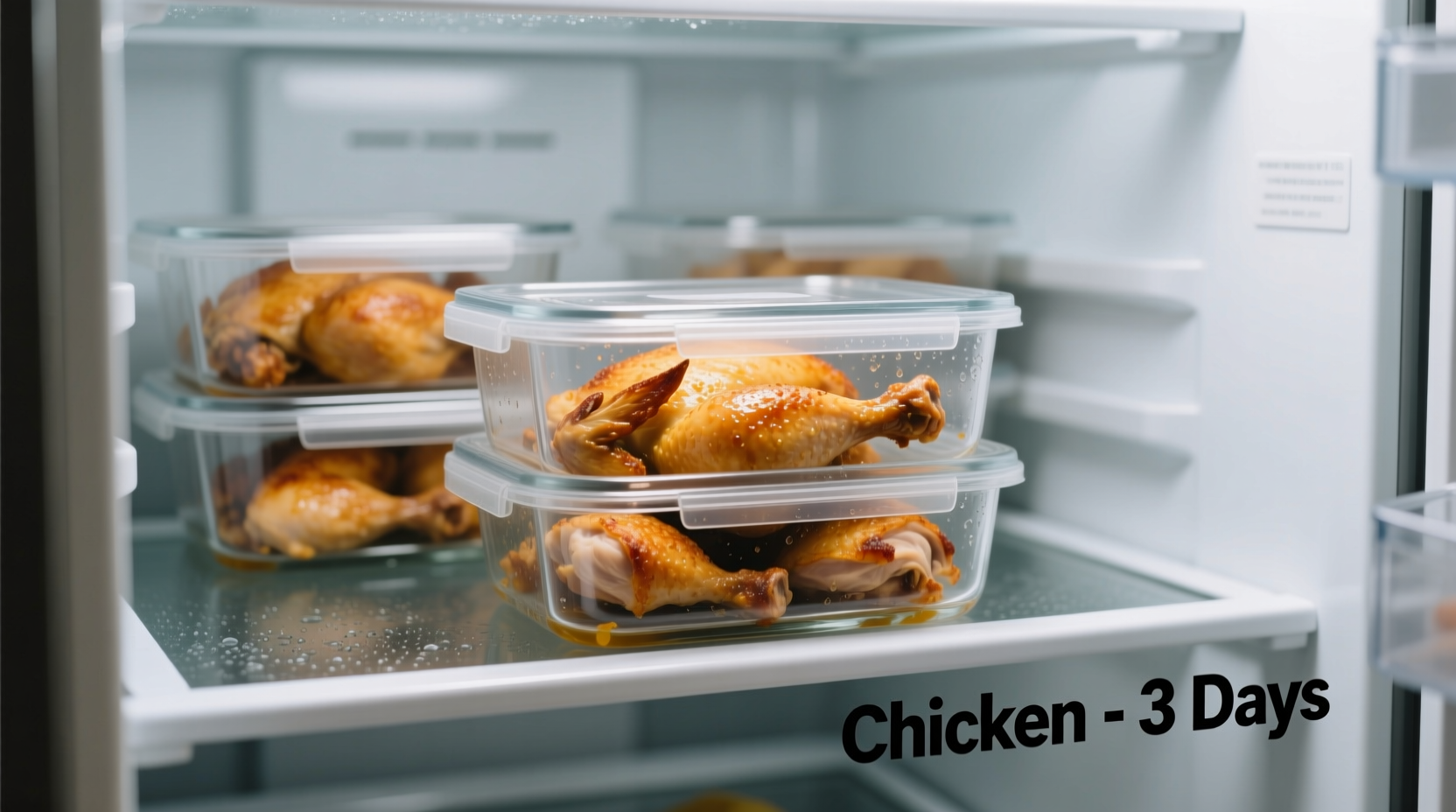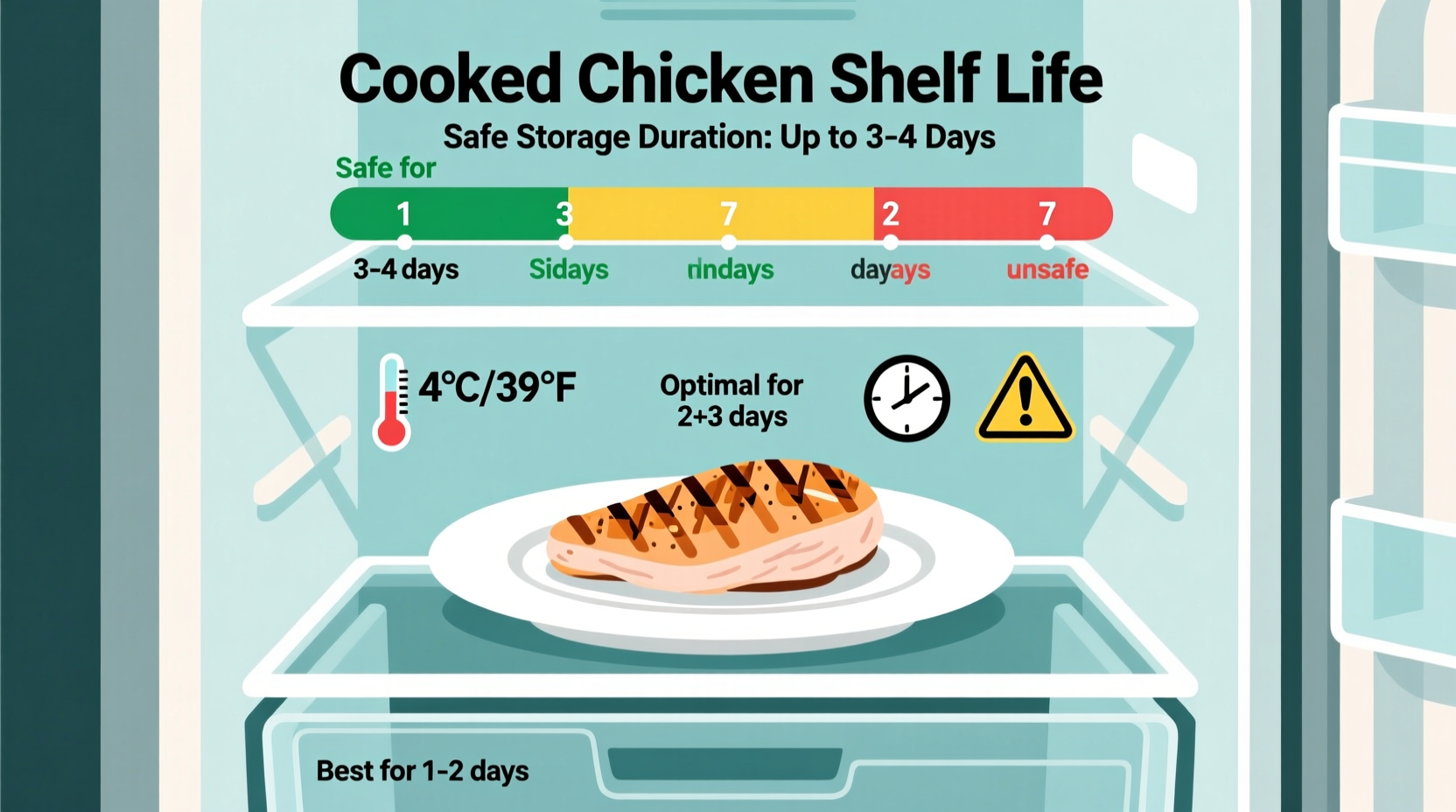Ever wondered if that leftover chicken from Sunday dinner is still safe to eat on Thursday? You're not alone. Millions of home cooks face this exact question weekly, and getting the answer wrong could lead to food poisoning. Let's cut through the confusion with science-backed storage guidelines you can trust.
The Critical 4-Day Safety Window Explained
According to the USDA Food Safety and Inspection Service, cooked chicken maintains peak safety for precisely 3-4 days in proper refrigeration. Why this specific window? Bacteria like Salmonella and Staphylococcus aureus begin multiplying rapidly after the 4-day mark, even when refrigerated.
The danger isn't always visible or detectable by smell in early stages. That's why following strict time guidelines matters more than trusting your senses alone. The USDA's recommendation isn't arbitrary—it's based on extensive research into bacterial growth rates at standard refrigerator temperatures.
| Storage Method | USDA Guideline | FDA Food Code |
|---|---|---|
| Refrigerator (40°F/4°C or below) | 3-4 days | 7 days maximum |
| Freezer (0°F/-18°C) | 4 months | 6 months |
| Room Temperature | 2 hours max | 1 hour if above 90°F |
Your Step-by-Step Refrigeration Protocol
Simply placing chicken in the fridge isn't enough. Follow these professional kitchen practices to maximize safety:
Immediate Cooling is Critical
Never put hot chicken directly into the refrigerator. The FDA Food Code requires cooked food to cool from 140°F to 70°F within 2 hours, then to 40°F within another 4 hours. To achieve this:
- Divide large portions into shallow containers (no deeper than 2 inches)
- Place containers in an ice-water bath while stirring occasionally
- Use a food thermometer to verify temperature before refrigerating
Proper Packaging Techniques
Air exposure accelerates spoilage. For maximum freshness:
- Use airtight containers with minimal headspace
- Alternatively, wrap tightly in heavy-duty aluminum foil or freezer paper
- Label containers with preparation date using waterproof marker

Spoilage Timeline: What Happens After Day 4
Understanding the bacterial growth process helps explain why the 3-4 day rule exists. Here's what occurs behind the scenes:
- Day 1-2: Bacterial levels remain at safe levels; chicken maintains original texture and aroma
- Day 3: Early spoilage bacteria begin multiplying; slight changes may occur in moist areas
- Day 4: Pathogenic bacteria reach concerning levels; texture becomes slightly slimy in spots
- Day 5+: Visible mold may appear; strong sour odor develops; texture becomes uniformly slimy
Context-Specific Storage Considerations
Not all cooked chicken storage situations are equal. These factors significantly impact shelf life:
Moisture Content Matters
Chicken in gravy or sauce typically spoils faster than dry roasted chicken. The additional moisture creates a more hospitable environment for bacteria. Reduce storage time by 12-24 hours for saucy preparations.
Refrigerator Temperature Verification
Your fridge's built-in thermometer often lies. Place a standalone appliance thermometer on the middle shelf to verify actual temperature. The CDC confirms that every degree above 40°F significantly accelerates bacterial growth.
Container Material Impact
Glass containers maintain temperature more consistently than plastic. If using plastic, choose BPA-free containers specifically designed for food storage. Avoid reusing takeout containers which often don't provide adequate seals.
When in Doubt, Throw It Out: Safety First
While food waste concerns are valid, risking food poisoning isn't worth it. Trust these definitive spoilage indicators:
- Visual: Grayish-green discoloration, visible mold (even in small spots)
- Smell: Sour, ammonia-like, or sulfuric odor (different from normal chicken aroma)
- Texture: Slimy film that doesn't wash off, sticky surface
- Taste: Don't risk tasting suspicious chicken—discard immediately
Remember: Pathogenic bacteria like Campylobacter don't always produce noticeable odors or visual changes. When storage duration exceeds USDA guidelines, discard regardless of appearance.
Extending Your Chicken's Shelf Life
If you won't eat leftovers within 4 days, freezing is your best option:
- Portion chicken into single-serving sizes before freezing
- Use vacuum sealing for maximum shelf life (up to 6 months)
- For reheating, thaw overnight in refrigerator—not at room temperature
- Reheat to internal temperature of 165°F (74°C) verified by thermometer
Meal preppers take note: Cooked chicken maintains quality for 2-3 months in standard freezer storage, but up to 6 months with vacuum sealing. Always label packages with both preparation and use-by dates.
Common Storage Mistakes to Avoid
Even with good intentions, these errors compromise food safety:
- The "Sniff Test" Fallacy: Pathogenic bacteria often don't produce noticeable odors
- Stacking Containers: Prevents proper air circulation and consistent cooling
- Using Original Packaging: Takeout containers rarely provide adequate seals
- Leaving at Room Temperature: More than 2 hours in the "danger zone" requires discarding











 浙公网安备
33010002000092号
浙公网安备
33010002000092号 浙B2-20120091-4
浙B2-20120091-4